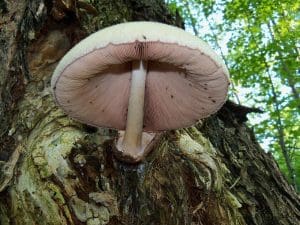Silky Rosegill / Summer / Autumn / Winter / Edible
The Silky Rosegill (Volvariella bombycina) is a stunning and edible mushroom that occasionally graces decaying hardwoods with its presence. Its silky, cream-coloured cap and delicate pink gills give it a striking appearance, making it a prized find for those lucky enough to stumble upon it. This rare species typically grows on dead or dying trees, favouring elm, ash, and other broadleaved hardwoods.
As a choice edible mushroom, the Silky Rosegill is highly valued for its delicate flavour and smooth texture. However, due to its rarity, it’s a mushroom that foragers often admire more than harvest, respecting its role in the ecosystem. In this post, we’ll explore how to identify the Silky Rosegill, where it’s likely to grow, and tips for foraging responsibly while appreciating this beautiful species.
Scientific Name
Volvariella bombycina
Common Name
Silky rosegill
Family
Pleuteaceae
Habitat and season
Saprophytic growing directly off hardwood, particularly Beech, Elms and Maples
Summer to early winter
Identifying Features of the Silky Rosegill
This is a truly stunning and idyllic looking mushroom. Usually appears singly, occasionally in pairs.
Cap
White to pale cream, covered in soft wooly fibers (fibrillose). Egg shaped at first, flattening out with age turning bell shaped with an umbo (raised center)
Can be very large up to 20cm in diameter. Cap remains slightly in-rolled
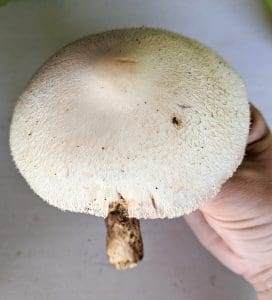
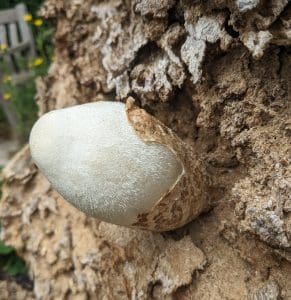
Stem:
Central on cap, white smooth with no ring. Very large light brown/grey bag like volva at the base that persists. 7-15cm long and 1-2 cm wide
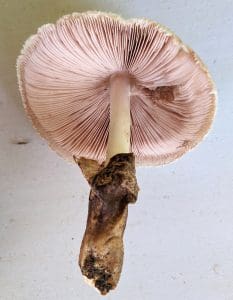
Gills:
Free and crowded
White when young turning pink with age
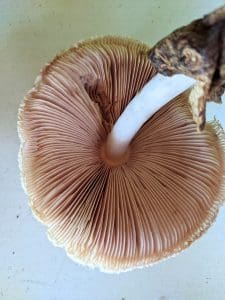
Smell:
Faint, mushroomy
Spores
pink
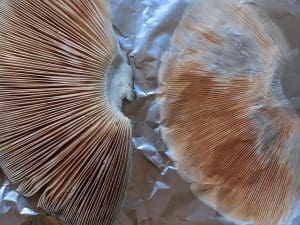
Uses of the Silky Rosegill
Although this mushroom is good edible species, unless found in large numbers its best left in the interest of conservation as it is considered rare in some areas. I feel fortunate to see this beauty frequently.
Conservation Considerations
Rare depending on region.
Silky Rosegill Could Be Confused With…
A beginner forager should be very cautious with any mushroom emerging from a volva for risk of mixing up with one of the deadly Amanita species like the destroying angel. Fortunately they do have some clear differences- Amanitas grow from the ground not off wood, and have white spore deposits not pink so also won’t have pink gills. They also have scales on the cap not fibers that look wooly.
Stubble rosegill- In the same genus as Silky rosegill so very similar. The stubble rosegill grows from the ground not wood and has a smooth cap not wooly.
Caution and known hazards
Not in the fruiting body itself but danger is with misidentification.
Source
book- Fungi of temperate Europe vol 1



